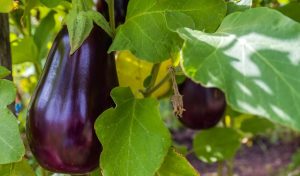Santolina is a species of plant in the family Asteraceae, native to the Mediterranean Basin.
The plant is also known as cotton lavender or lavender cotton.
It is an evergreen shrub with small, yellow flowers and aromatic leaves.
Santolina has many uses, including as an ornamental plant, a medicinal herb, and a source of essential oil. The leaves and flowers of the plant are often used for making sachets and potpourris.

Ornamental uses of Santolina
Santolina is commonly grown as an ornamental plant.
The small yellow flowers and aromatic leaves make it a popular choice for gardens and landscaping.
The plant is also drought tolerant, which makes it a good choice for areas that experience little rainfall.
Santolina for medicinal use
Santolina has been used medicinally for centuries.
The plant was traditionally used to treat stomach aches and colic in infants. It was also believed to have antispasmodic and sedative properties.
Today, Santolina is still used in traditional herbal medicine.
The plant is thought to be effective in treating digestive disorders, anxiety, and insomnia.

Essential Oil
Santolina is a source of essential oil. The oil is extracted from the leaves and flowers of the plant and is used in aromatherapy.
The oil has a fresh, floral scent with notes of citrus. It is believed to have calming and relaxing properties.
How to grow Santolina
Santolina is easy to grow and care for. The plant prefers full sun and well-drained soil.
It is drought tolerant and does not need much water once established.
To propagate Santolina, take stem cuttings in spring or summer.
Plants can also be grown from seed, but they can be slow to germinate.
Start seeds indoors about eight weeks before the last frost date.
Santolina is a low-maintenance plant that does not require much fertilizer.
If you do fertilize, use a low-nitrogen fertilizer such as bone meal or compost.
Santolina can be pruned to shape if necessary. flowering will occur in late spring or early summer.

Where can you get Santolina plants from?
Santolina plants are available from nurseries and garden centers.
They can also be propagated from stem cuttings or seed and you may be able to source plants or seeds online.
[amazon box=”B08Z7DJW5G” template=”horizontal” description=” “]
How fast does Santolina grow?
Santolina grows slowly at first, but once it becomes established, it will grow more quickly. The plant can reach a height of two feet and a width of three feet.
Do butterflies like Santolina?
Yes, butterflies are attracted to the small yellow flowers of the plant.
Looking after santolina
Santolina is a hardy plant that does not require much care.
Water the plant deeply, but only when the soil is dry.
To prevent the spread of disease, do not over-water or allow the plant to stand in water.
Prune the plant as needed to shape it or remove any damaged or dead leaves or stems.
If you live in an area where winters are cold, you may need to bring your plants indoors or provide them with some protection from the elements.

Santolina is generally resistant to pests and diseases, but it can be susceptible to root rot if the roots are allowed to sit in wet soil for extended periods of time.
To prevent root rot, make sure the plant is grown in well-drained soil.
If you notice any pests on your plants, remove them by hand or treat with an insecticidal soap or neem oil.
Harvesting santolina
You can harvest Santolina leaves and flowers at any time.
To dry the plants, tie them in bundles and hang them upside down in a dark, cool, dry place.
Once the plants are dry, you can store them in airtight containers for future use.
What does Santolina smell of?
When crushed, the leaves of Santolina smell strongly of citrus with a hint of lavender. The essential oil extracted from the plant has a similar scent.

Is Santolina poisonous?
Santolina is not considered to be poisonous. However, it is always best to err on the side of caution and keep plants out of reach of children and pets.
What do you do with Santolina after it has flowered?
After Santolina has flowered, you can cut the plant back to encourage new growth.
You can also deadhead the flowers to prevent the plant from self-seeding.
Is Santolina an annual or a perennial?
Santolina is a perennial plant, which means it will come back year after year.
[amazon box=”B07KCKGPLZ” template=”horizontal”]
Final Words
Santolina is a hardy and easy-to-grow plant that has a wide range of uses.
Whether you’re looking for a drought-tolerant addition to your garden or an ingredient for your next batch of homemade soap or pot pourri, this versatile plant is worth considering.






